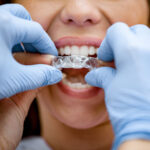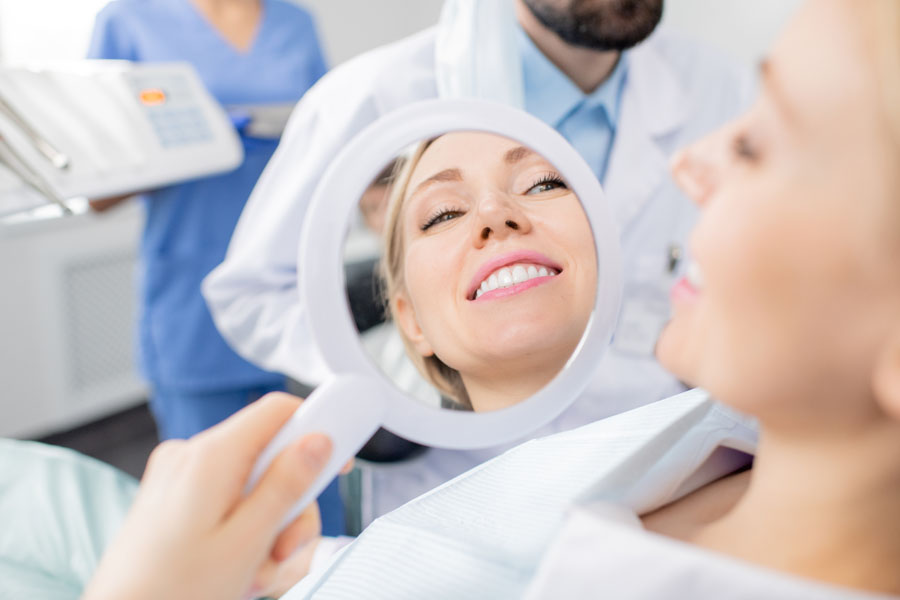1) In-office, at the dentist whitening
In-office whitening is sometimes known as power bleaching or laser whitening. A strong gel is applied to your teeth followed by the application of a particular light source to activate the material further. Great care must be taken to isolate the gums from the whitening gel as it is quite strong as will irritate the gum if left in contact with it.
2) Take home kits supplied by the dentist
Take-home kits have been proved again and again to be safe and reliable and either use hydrogen peroxide or carbamide peroxide. There are kits for use when you are asleep or others that may be used for a short time during the day. These have been used at home since 1989 and have a long safe history. A custom-fit tray is fabricated for your mouth to hold the whitening gel up against the outside of the teeth for a period of time. Some solutions are used for a half-hour daily and others overnight.
3) Over the counter products
Whitening strips have a really thin layer of whitening gel infused into the material and they are applied to the outside of the teeth to be whitened. The downside is that its difficult to apply the strip to crooked teeth or teeth a little further back. Also, the lack of a good fit can irritate the gum.
Paint on varnish type gel- these are applied to the teeth just like nail varnish which has its attractions in that excess can be controlled. The limitations are it is difficult to keep the material on long enough to have the desired effect. Also, it is best to use a system where the brush is not reused as it will become bacteria heaven otherwise.
Whitening mouthwashes and chewing gums generally attempt to stop stain forming in the first place and have limited effect on already present discolouration.
Whitening toothpaste and even floss are available but are generally too abrasive and in the wrong hands damaging to teeth.





